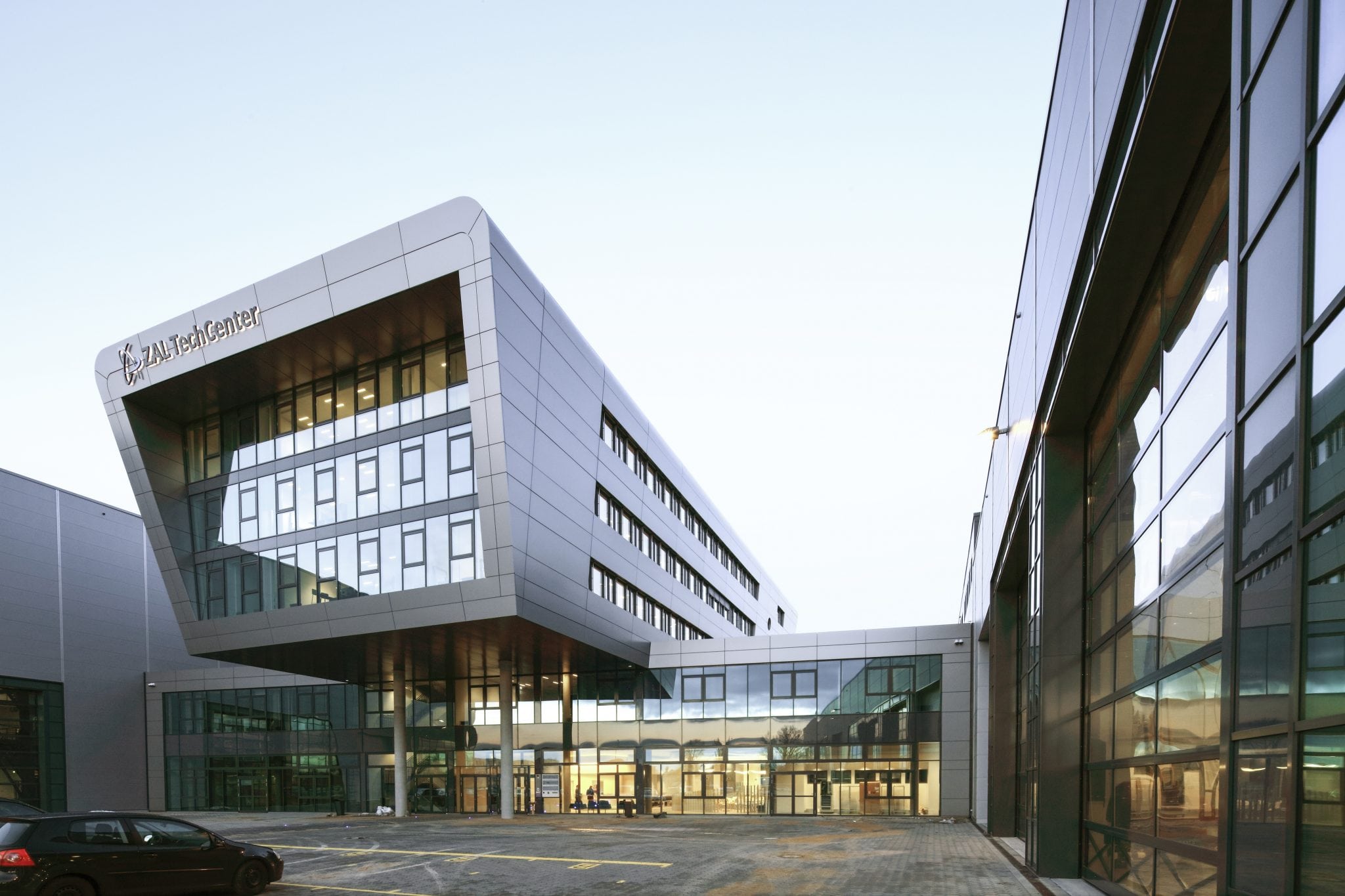Skift Take
The Hanseatic City of Hamburg has become an example of the advancements possible when local government gets behind its aviation community by providing financial, promotional, and logistical support.
The city of Hamburg has invested $110 million to establish a new science centre dedicated to the study of future aviation technologies which will improve the air travel experience.
The ZAL Centre of Applied Aeronautical Research will house up to 600 specialists in fields of research such as fuel cells, aircraft cabin technology, 3D printing, Internet of Things (IoT), acoustics, and virtual reality in its new 26,000 square meter modern building.
As Lukas Kirchner, Head of Communications at Hamburg Aviation explains:
“The concept of the ZAL stems from 2008, when Hamburg Aviation won the Federal Government’s Leading Edge Cluster Competition, bringing $88 million for collaborative research projects into the city. Part of our ‘pitch’ back then was the idea to institutionalize R&T at the site by creating a joint R&T facility for all involved companies and universities here at the site.”
The ZAL entity (GmbH) was founded shortly after, in 2009, with the collaboration of nine stakeholders: City of Hamburg, Airbus, Lufthansa Technik, the German Aerospace Centre (DLR), and four universities. Holding the largest stake in the Research and Technology enterprise are Airbus, LH Technik, and the City of Hamburg, each with 20%. Twelve additional partners are involved in ZAL’s programs.
“What makes the ZAL TechCenter so special is the fact that the partners are all equal and work together without hierarchical issues—universities, research institutions, and SMEs along with suppliers and major industrial players. Creative potential has free rein here,” says Dr. Johannes Bussmann, Chairman of the Executive Board of Lufthansa Technik AG.
The research centre is dedicated to keeping the Hanseatic City of Hamburg, where Airbus’ German plant and Lufthansa Technik are headquartered, at the cutting-edge of tomorrow’s aerospace technologies. But the objective of the facility is not only to make aid advanced research for those two companies but for other industry entities specializing in the various areas of concentration as well and to position as a centre of excellence in the technologies which will fuel the future.
“The ZAL TechCenter is a boost to Hamburg’s international research and development profile, well beyond the boundaries of the aviation industry. ZAL is more than an aeronautical research centre. It is a pioneering example of a sustainable and successful concept for cooperation between the commercial and academic sectors,” says Olaf Scholz, Hamburg’s Governing Mayor.
The centre is divided into six technical focal points, dubbed “Technical Domains” or TDs by ZAL’s founders.
TD1, Fuel Cell Lab, TD2, Cabin Innovation & Technology, TD3, Air & Power Systems, TD4, Aerospace Production & Fuselage Engineering, TD5, Testing & Safety, and TD6, General Processes & Support Topics, all represent core competencies in Hamburg’s aviation sector and can also benefit other industries like public transport and logistics, Kirchner explains.
Equipping the facility to support these research programs required:
- The building of a 20-meter wide, 11-meter high ZAL Cabin and Cargo Test Rig for fuselages, to test new cabin configurations.
- A Dedicated Acoustics Lab where a complete fuselage section of an Airbus A320 cabin can be tested for noise levels and vibrations on the ground.
- And a dedicated virtual reality room which will feature a 6×3.5 meter screen and can accommodate 30 people.
“The ZAL TechCenter provides the umbrella, under which the commercial and academic sectors will work together on the future of aviation,” says Roland Gerhards, CEO of the ZAL Center of Applied Aeronautical Research. “Our modern research and test infrastructure provides the ideal environment, and the first application-oriented products will be entering into service in just a few years.”
The Aerospace Production and Fuselage Engineering TD4 will also be looking into practical applications of Additive Layer Manufacturing (ALM), more commonly known as “3D printing.” Aerospace companies are already beginning to experiment with the possibilities this technology opens up for lightweight, durable components with reduced parts assemblies which promise to be more cost effective and require less maintenance.
The Center in Practice
Air New Zealand recently announced that it had produced a fold-down cocktail table for its Business class seat through 3D printing (ALM) production methods, as part of an ongoing research project with the Auckland University of Technology. GE Aviation, among others, have used ALM metal laser melting technologies to print aircraft parts which must sustain stress in repeated use, like 3D printed fuel nozzles.
Over the past few decades, the City of Hamburg has become a Mecca for the aviation community, having hosted the Aircraft Interiors Expo as it has ballooned over more than ten years, and actively hosting key aviation industry events throughout the year.
The ZAL will also serve as a location for events in future. It comes equipped with a 200-seat auditorium, 12 conference rooms and a large in-house restaurant for catering.
While the ribbon cutting took place on Monday, tenants are already preparing to launch projects at the facility, Kirchner says.
“We have already over 200 people working in the TechCenter right now. Several tenants will still move in over the next months. After this, the first research projects will actively go underway,” he says. “Companies like Diehl are already beginning to set up completely new Research & Technology teams for aircraft interiors in the ZAL and will continue to grow them.”
Have a confidential tip for Skift? Get in touch
Tags: aviation, technology
Photo credit: The new ZAL Centre of Applied Aeronautical Research in Hamburg Hamburg Aviation
